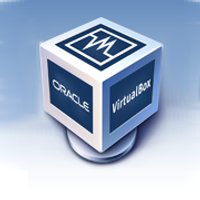Install VirtualBox 4.2 on CentOS 6 / RHEL 6
 Oracle VirtualBox is open source virtualization product for enterprise as well as home purpose, It is a x86 fully virtualizer for general purpose desktops. It is released under GNU GPL License. You can download it from official website.
Oracle VirtualBox is open source virtualization product for enterprise as well as home purpose, It is a x86 fully virtualizer for general purpose desktops. It is released under GNU GPL License. You can download it from official website.
It supports multiple guest operating system:
- Windows NT
- Windows 2000
- WIndows XP (32 bit/64 bit)
- Windows Vista (32 bit/64 bit)
- Windows 7 (32 bit/64 bit)
- Windows 8 (32 bit/64 bit)
- Windows 2003 Server (32 bit/64 bit)
- Windows 2008 Server (32 bit/64 bit)
- Ubuntu 5.10 / 6.06 Desktop / 7.04 – 12.10
- Debian
- openSUSE
- Mandriva
- Fedora
- RHEL/CentOS
- Mac OS X
- Solaris
- FreeBSD
- OpenBSD
This tutorial shows how to install VirtualBox 4.2.10(Latest VirtualBox 4.2) on CentOS 6 / RHEL 6 via yum repository.
Step 1: Open terminal ( Accessories ——> System Tools ——> Terminal).
Step 2: Install header and development tools.
[root@itzgeek~/# yum groupinstall “Development Tools”
[root@itzgeek~/# yum update
Step 3: Download Oracle public key.
Step 4: Import Oracle public key.
Step 5: Download CentOS 6 / RHEL 6 repo file for VirtualBox and Move it into /etc/yum.repos.d directory.
[root@itzgeek~/]# mv virtualbox.repo /etc/yum.repos.d/
Step 6: Install VirtualBox 4.2 (This for VirtualBox 4.2.x version) and dkms.
Note: dkms package is to ensure that the VirtualBox host kernel modules (vboxdrv, vboxnetflt and vboxnetadp) are properly updated if the linux kernel version changes during the next kernel upgrade
Step 7: Add your user name in to vboxuser group.
Step 8: Start VirtualBox using following command.
Now you can start adding VM’s on VirtualBox.
